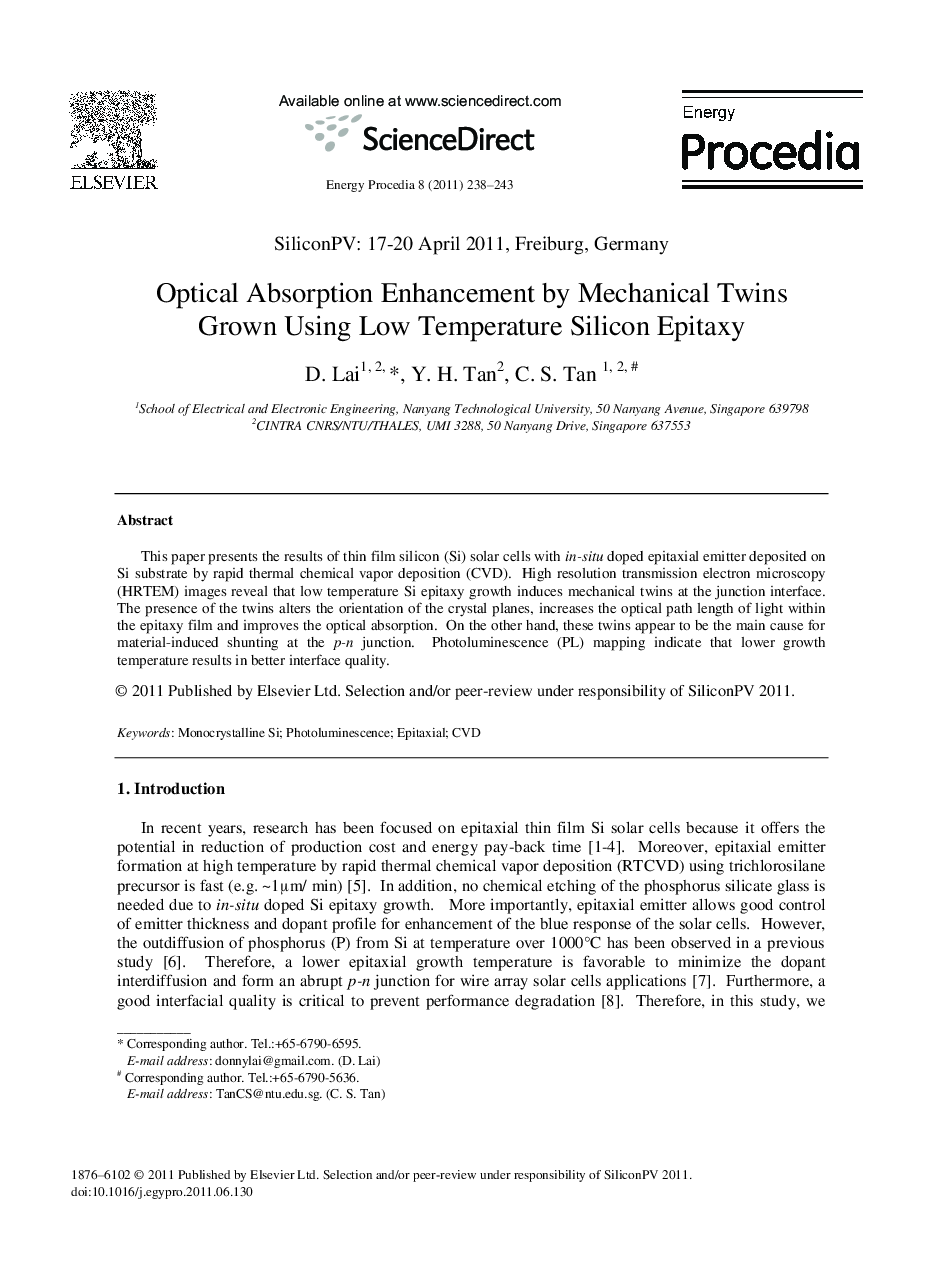| Article ID | Journal | Published Year | Pages | File Type |
|---|---|---|---|---|
| 1514683 | Energy Procedia | 2011 | 6 Pages |
Abstract
This paper presents the results of thin film silicon (Si) solar cells with in-situ doped epitaxial emitter deposited on Si substrate by rapid thermal chemical vapor deposition (CVD). High resolution transmission electron microscopy (HRTEM) images reveal that low temperature Si epitaxy growth induces mechanical twins at the junction interface. The presence of the twins alters the orientation of the crystal planes, increases the optical path length of light within the epitaxy film and improves the optical absorption. On the other hand, these twins appear to be the main cause for material-induced shunting at the p-n junction. Photoluminescence (PL) mapping indicate that lower growth temperature results in better interface quality.
Keywords
Related Topics
Physical Sciences and Engineering
Energy
Energy (General)
Authors
D. Lai, Y.H. Tan, C.S. Tan,
